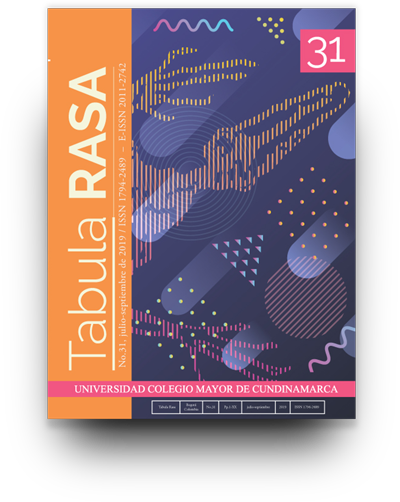A nation of flesh : cattle and meat representations in Argentina after 2001.
Una nación en carne viva : representaciones del ganado y de la carne argentinas post 2001.
Show authors biography
This article analyses the inscription of cattle and meat in argentinean post 2001 cultural representations. My main argument is that, despite the statement that says that modernity and then capitalism have stripped animals of every form of agency (Berger 1980), instances in which those paradigmes enter a crisis allow the animal to re-enter historical and cultural networks in a significant way. In order to prove this, in the first section, I briefly analyze the foundational piece The Slaughterhouse by Esteban Echeverría in relationship to the convoluted times at the beginning of the nation. I then turn to literary text and visual representations post 2001 to see how, following Echeverría’s model of representation, the nation continued to reflect upon its identity through the inscription of animals in moments of social, economic, and political instability.
Article visits 146 | PDF visits 74
Downloads
- Anderson, B. (2006). Imagined Communities. London: Verso.
- Auyero, J. (2001). La política de los pobres. Buenos Aires: Ediciones Manantial. Becerra, J.J. (2007). La vaca. Buenos Aires: Arty Latino.
- Bentham, J. (2005). Principles of Morals and Legislation. In L. Kaloff and A. Fitzgerald (Eds.). The Animals Reader, (pp. 8-10) New York: Bloomsbury, Berger, J. (2009). Why Look at Animals? London: Penguin.
- Bonnet, A. & Piva, A. (2009). Argentina en pedazos. Buenos Aires: Continente.
- Brown, J. C. (1979). A Socioeconomic History of Argentina, 1776-1860. New York: Cambridge UP.
- Ciorallo, N. (2014, noviembre 4). La boca del lobo. Página/12: Las12. Recuperado de: https://www.pagina12.com.ar/diario/suplementos/las12/13-1574-2004-11-12.html
- Derrida, J. (2008). The Animal That Therefore I Am. New York: Fordham UP. Echeverría, E. (1999). El matadero. Buenos Aires: El Aleph.
- Giorgi, G. (2014). Formas comunes: animalidad, cultura, biopolítica. Buenos Aires: Eterna Cadencia.
- Haraway, D. (2008). When Species Meet. Minneapolis: University of Minnesota Press. Jozami, Á. (2003). La destrucción de una nación. Buenos Aires: Mondadori.
- Kohan, M. (2018). El Matadero. E-misférica, 10 (2). Recuperado de: http://hemisphericinstitute.org/hemi/es/e-misferica-101/kohan.
- La situación de Argentina respecto de la fiebre aftosa (2017, abril 4). Clarín. Recuperado de: https://www.clarin.com/rural/situacion-argentina-respecto-fiebre-aftosa_0_BywVo8lsl.html.
- Mohl, R. (2015). Grupo Mondongo. Fluctuating Image Networks. Contingent Beauty: Contemporary Art from Latin America, (pp.137-147). Houston: fte Museum of Fine Arts.
- Nabot, D. (2011). Dos semanas, cinco presidentes. Buenos Aires: Aguilar. Pachirat, T. (2011). Every Twelve Seconds. New Haven: Yale University Press.
- Rodríguez, M. (2012). Ministerio de desarrollo social. Buenos Aires: Determinado Rumor. Vialles, N. (1994). Animal to Edible. Cambridge: Cambridge University Press.
- Scobie, J. (1971). Argentina: a City and a Nation. New York: Oxford University Press. Smith, P. (1969). Politics and Beef in Argentina. New York: Columbia University Press. Sommer, D. (1991). Foundational Fictions. Berkeley: University of California Press.




